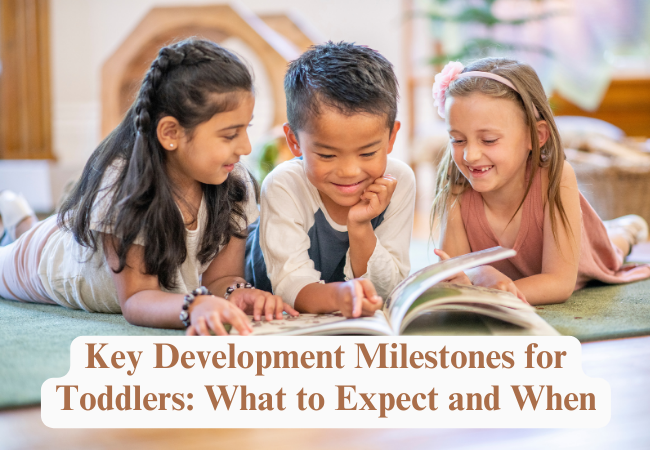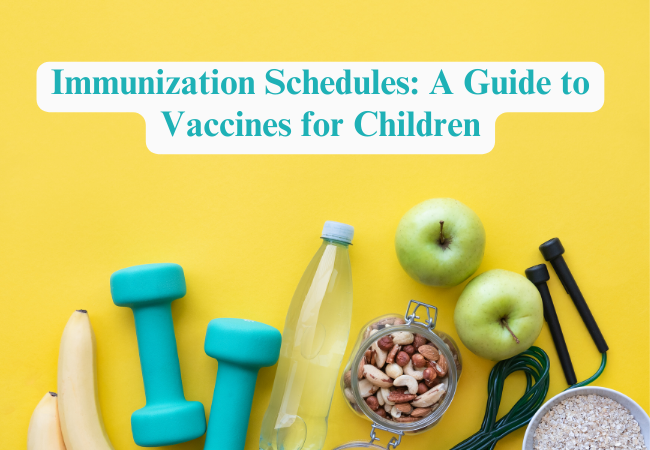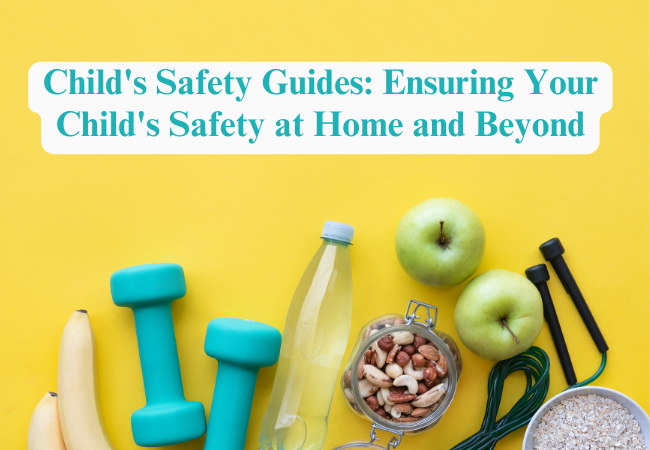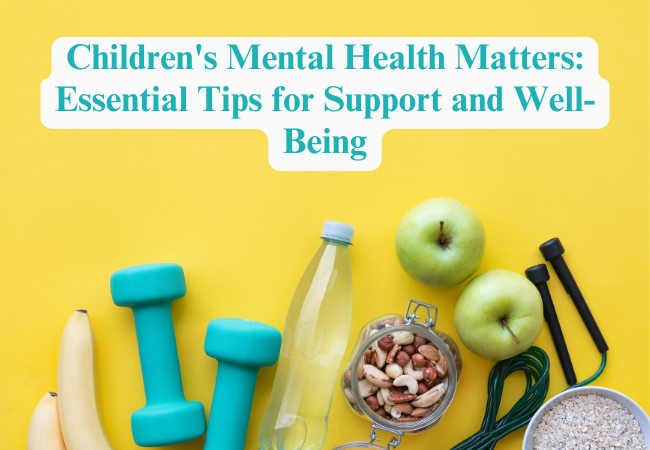Key Development Milestones for Toddlers: What to Expect and When
Track your toddler’s growth with our guide to key development milestones. From first steps to language skills, learn what to expect at each stage and how to support your child’s journey through these exciting years.
Watching your child grow from a baby into a toddler is an exciting journey. Every day brings new discoveries and achievements. But it’s normal to wonder if your child is developing as expected. This guide will help you understand the key milestones toddlers typically reach and when to expect them. Remember, every child is unique and may develop at their own pace.
What are Developmental Milestones?

Developmental milestones are skills or behaviors that most children can do by a certain age.
These milestones cover different areas of development:
- Physical development (like walking)
- Social and emotional development (like smiling at people)
- Language and communication (like saying first words)
- Cognitive development (like learning to solve simple problems)
Learn more about developmental milestones from the CDC
Now, let’s look at what you can expect during the toddler years, from 12 to 36 months.
12-18 Months: The Early Toddler Stage
Physical Development:
- Walks alone
- May walk up steps and run
- Pulls toys while walking
- Can help undress themselves
- Drinks from a cup
- Eats with a spoon
Language and Communication:
- Says several single words
- Says and shakes head “no”
- Points to show someone what they want
Social and Emotional:
- Plays simple pretend, such as feeding a doll
- May have tantrums
- May be afraid of strangers
- Shows affection to familiar people
Cognitive:
- Knows what ordinary things are for (telephone, brush, spoon)
- Points to get the attention of others
- Shows interest in a doll or stuffed animal by pretending to feed
- Points to one body part
- Scribbles on their own
How to support your 12-18 month old:
- Provide safe areas for your child to walk and explore
- Read to your child daily
- Encourage pretend play with dolls, stuffed toys and play food
Read more about supporting your 1-year-old’s development
18-24 Months: The Growing Toddler
Physical Development:
- Walks and runs well
- May be able to kick a ball
- Climbs onto and down from furniture without help
- Walks up and down stairs holding on
- Throws ball overhand
Language and Communication:
- Uses many different words
- Puts two words together (“more milk”)
- Points to things or pictures when named
Social and Emotional:
- Copies others, especially adults and older children
- Gets excited when with other children
- Shows more and more independence
- Shows defiant behavior
Cognitive:
- Finds things even when hidden under two or three covers
- Begins to sort shapes and colors
- Completes sentences and rhymes in familiar books
- Plays simple make-believe games
How to support your 18-24 month old:
- Encourage physical play like running, climbing (under supervision)
- Talk to your child and name objects around you
- Provide simple puzzles and sorting games
Learn more about your toddler’s development at this stage
24-36 Months: The Older Toddler
Physical Development:
- Jumps in place
- Climbs well
- Pedals a tricycle
- Walks up and down stairs, one foot on each step
Language and Communication:
- Follows instructions with 2 or 3 steps
- Can name most familiar things
- Understands words like “in,” “on,” and “under”
- Says first name, age and sex
- Names a friend
- Says words like “I,” “me,” “we,” and “you”
Social and Emotional:
- Copies adults and friends
- Shows affection for friends without prompting
- Takes turns in games
- Shows concern for a crying friend
- Understands the idea of “mine” and “his” or “hers”
- Shows a wide range of emotions
- Separates easily from mom and dad
- May get upset with major changes in routine
Cognitive:
- Can work toys with buttons, levers and moving parts
- Plays make-believe with dolls, animals and people
- Does puzzles with 3 or 4 pieces
- Understands what “two” means
- Copies a circle with pencil or crayon
- Turns book pages one at a time
- Builds towers of more than 6 blocks
- Screws and unscrews jar lids or turns door handle
How to support your 24-36 month old:
- Encourage pretend play
- Read to your child every day
- Let your child help with simple chores
- Encourage your child to play with other children
Discover more ways to support your 2-3 year old’s development
When to Be Concerned
While every child develops at their own pace, there are some signs that might indicate a need for extra support. Talk to your doctor if your child:
By 18 months:
- Doesn’t point to show things to others
- Can’t walk
- Doesn’t know what familiar things are for
- Doesn’t copy others
- Doesn’t gain new words
- Doesn’t have at least 6 words
By 24 months:
- Doesn’t use 2-word phrases (like “drink milk”)
- Doesn’t know what to do with common things, like a brush, phone, fork, spoon
- Doesn’t copy actions and words
- Doesn’t follow simple instructions
- Doesn’t walk steadily
- Loses skills they once had
By 36 months:
- Falls down a lot or has trouble with stairs
- Drools or has very unclear speech
- Can’t work simple toys (such as peg boards, simple puzzles, turning handle)
- Doesn’t speak in sentences
- Doesn’t understand simple instructions
- Doesn’t play pretend or make-believe
- Doesn’t want to play with other children or with toys
- Doesn’t make eye contact
- Loses skills they once had
Learn more about developmental concerns from the American Academy of Pediatrics
Remember, this list is a general guide. If you have any concerns about your child’s development, don’t hesitate to speak with your pediatrician.
Supporting Your Toddler’s Development
Here are some general tips to support your toddler’s growth and development:
- Provide a safe, loving environment
- Talk, read and sing to your child
- Encourage play and exploration
- Set routines and limits
- Offer choices to promote independence
- Praise good behavior
- Respond to and comfort your child when upset
Conclusion
The toddler years are full of amazing changes and growth. By understanding these key milestones, you can better support your child’s development and enjoy this exciting time together. Remember, every child is unique and may reach milestones at different times. The most important thing is to provide a loving, supportive environment for your child to grow and learn.
Do you have any experiences or tips about toddler development you’d like to share? Leave a comment below!
For more information and guide, visit usaparentingtips.com






